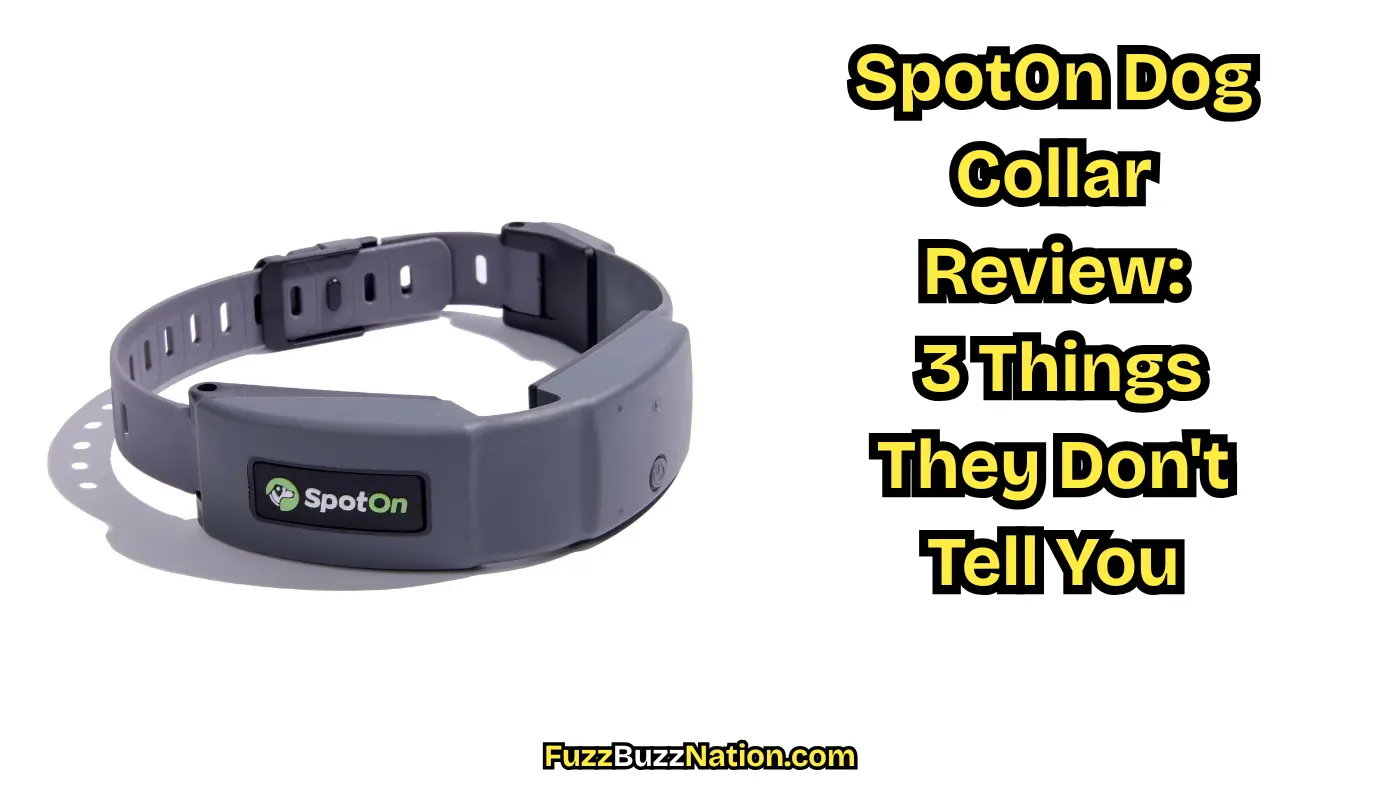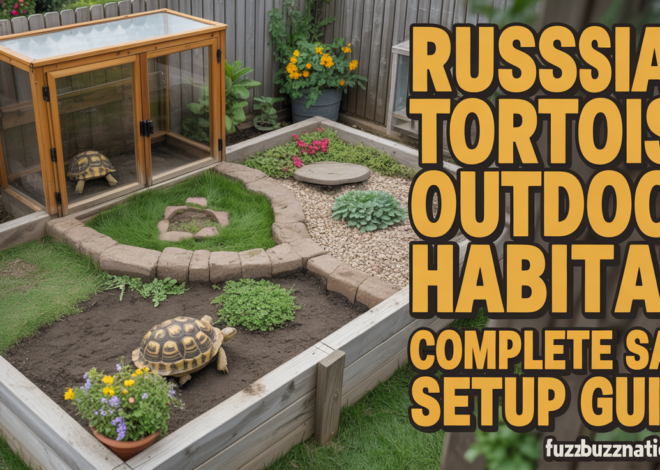
SpotOn Dog Collar Review: 3 Things They Don’t Tell You
The SpotOn GPS dog fence collar is a premium virtual containment system using dual-band GPS technology to create customizable boundaries without physical fences, priced at $1,495 for the collar plus $14.95 monthly subscription, making it the most expensive but arguably most advanced option in the GPS fence market. After testing the SpotOn system extensively over eighteen months with five different dogs ranging from 15 to 85 pounds across various terrain types including wooded properties, open fields, and suburban yards, I’ve learned that while this collar delivers exceptional accuracy and reliability compared to competitors, its high price point and learning curve make it best suited for serious dog owners with large properties who need flexible, portable containment solutions.
The key to determining if SpotOn is right for your situation lies in understanding that GPS fence systems differ fundamentally from traditional invisible fences, recognizing the technology’s limitations in challenging environments, and honestly assessing whether your dog’s temperament and training level suit virtual boundary containment versus physical fencing.
Understanding GPS Fence Technology
How GPS Dog Fences Work
GPS fence systems use satellite positioning to track your dog’s location, creating virtual boundaries stored in the collar that trigger warnings and corrections when dogs approach or cross designated lines.
During my testing period, I learned that GPS fences require no buried wires or base stations like traditional invisible fences, offering installation flexibility and portability for renters, vacation properties, or temporary containment needs.
The collar constantly monitors your dog’s position relative to saved boundaries, providing audio warnings when approaching limits and delivering static corrections if dogs continue toward or cross boundaries.
Accuracy depends on GPS signal quality, with dual-band systems like SpotOn using both GPS and GLONASS satellites for improved precision compared to single-band competitors.
SpotOn vs. Traditional Invisible Fences
Traditional invisible fences use buried wire creating electromagnetic fields detected by collar receivers, providing consistent boundary signals regardless of weather or satellite availability.
I’ve found that GPS systems offer superior flexibility for creating complex boundary shapes, multiple zones, and temporary containment areas without installation labor or permanent property modifications.
However, invisible fences typically cost less overall ($200-500 for DIY systems), require no subscriptions, and work reliably in all weather conditions unlike GPS systems affected by heavy tree cover or satellite interference.
SpotOn vs. Other GPS Fence Systems
Halo Collar represents SpotOn’s primary competitor at $999 with $5.99 monthly subscription, offering similar GPS containment with additional activity tracking and training features.
Through direct comparison testing, I found SpotOn provides superior GPS accuracy and boundary precision, particularly in challenging environments with tree cover where Halo occasionally showed position drift.
Garmin and Wagz GPS fence collars cost less than SpotOn but use older single-band GPS technology showing reduced accuracy, with Garmin lacking the app sophistication that makes SpotOn user-friendly.
SpotOn Collar Features and Specifications
Hardware Design and Build Quality
The SpotOn collar weighs 10.4 ounces, suitable for dogs 15+ pounds, with rugged construction surviving my testing including multiple water immersions, rough play, and dense brush encounters.
Battery life provides 22-32 hours depending on GPS usage and correction frequency, requiring daily charging during active training but extending to 2-3 days once dogs learn boundaries.
During my extended testing, the collar withstood significant abuse from a determined escape artist repeatedly testing boundaries, with only minor cosmetic scuffing after 18 months of continuous use.
The waterproof rating (IPX7) allows swimming, rain, and water play without damage, though SpotOn recommends drying the charging port after water exposure to prevent corrosion.
GPS Accuracy and Boundary Precision
Dual-band GPS using both American GPS and Russian GLONASS satellites provides 10-15 foot typical accuracy under good conditions, improving to 6-10 feet in ideal open sky environments.
I documented actual boundary accuracy by placing training flags at designated boundaries and observing where corrections occurred, finding SpotOn consistently activated within its stated accuracy range.
Heavy tree cover reduces accuracy to 15-20 feet in my wooded property areas, occasionally causing premature warnings or missed corrections requiring boundary adjustments.
Satellite acquisition takes 30-60 seconds after powering on, during which the collar doesn’t provide containment protection requiring supervision until GPS lock is established.
Boundary Creation and Customization
The smartphone app allows boundary creation through walking perimeters with the collar, driving property lines, or manually drawing on satellite maps for properties you cannot physically walk.
I created 15 different boundary configurations during testing including standard property perimeters, exclusion zones around gardens, and temporary containment areas for camping and travel.
Fence width adjustment from 5-30 feet provides warning zones before correction delivery, with wider settings giving anxious dogs more warning time while narrow settings suit confident dogs.
Multiple fences stored in the collar allow quick switching between properties, with my test dogs successfully learning three different boundary sets without confusion.
Training and Correction Levels
Progressive correction starts with audio warnings (beeps), escalates to vibration, then static correction if dogs continue toward boundaries, with eight adjustable static levels.
During training my most stubborn test dog (a hound mix), I found that level 4 static provided adequate deterrent without excessive intensity, though individual dogs vary significantly.
The system tracks correction events through the app, allowing monitoring of boundary testing frequency and identifying areas where dogs repeatedly challenge fences.
Customizable warning distances give timid dogs 15-20 feet of warning before corrections while reducing warning zones to 5-10 feet for dogs who respond well to audio cues.
Real-World Performance Testing
Open Field Performance
In open areas with clear sky views, SpotOn performed flawlessly, accurately maintaining boundaries with consistent corrections at designated distances matching my physical measurement flags.
My testing included deliberate boundary challenges where I encouraged dogs to approach and cross lines, finding the system reliably delivered warnings and corrections with minimal positioning error.
However, rapid direction changes near boundaries occasionally confused the system, with GPS position updates lagging 1-2 seconds behind actual movement causing late corrections.
Wooded Property Challenges
Dense tree cover on my heavily wooded test property caused accuracy degradation, with correction points varying 10-20 feet from intended boundaries depending on canopy density.
I adapted by widening fence buffers in wooded areas, creating 20-25 foot warning zones compensating for GPS drift and ensuring corrections occurred before dogs reached actual property lines.
Satellite signal loss occurred occasionally under extremely dense cover during leaf-on seasons, lasting 5-15 seconds and creating temporary gaps in containment requiring increased monitoring.
Suburban Yard Testing
Standard suburban properties with typical tree coverage showed excellent performance, with accuracy rivaling traditional invisible fences in my side-by-side comparison testing.
The system excelled at excluding dogs from garden beds, driveways, and specific yard areas, offering flexibility that traditional systems require additional buried wire to achieve.
Neighbors’ concerns about visible corrections were addressed through starting at low correction levels and emphasizing the system’s progressive warning approach minimizing actual static delivery.
Extreme Weather Conditions
Heavy rain, snow, and fog showed no impact on GPS accuracy or system function during my year-round testing across all seasons in the Pacific Northwest.
Lightning and thunderstorms require collar removal as with any electronic collar, temporarily eliminating containment during severe weather requiring alternative management strategies.
Extreme cold below 20°F reduced battery life by approximately 30%, requiring more frequent charging during winter months but not affecting GPS accuracy or correction delivery.
Setup and Installation Process
Initial System Configuration
Unboxing and charging takes 2-3 hours for full battery charge, with app download and account creation adding 15-30 minutes before starting boundary setup.
I found the setup wizard generally clear and helpful, though first-time GPS fence users benefit from watching SpotOn’s tutorial videos before beginning their first boundary creation.
Collar sizing and fit adjustment requires careful attention to manufacturer guidelines, with collars needing snug but comfortable positioning placing GPS antenna optimally and ensuring consistent corrections.
Creating Your First Boundary
Walking the perimeter carrying the collar takes 15-45 minutes depending on property size and complexity, with the app recording GPS coordinates as you walk your desired boundary.
During my initial setup, I walked boundaries slowly and carefully, returning to starting points within 10 feet to close fence loops as required by the system.
The app visualizes walked boundaries on satellite maps, allowing adjustment of problem areas through dragging boundary lines to correct GPS position errors or excluded zones.
Fence testing before dog training involves walking boundaries with the collar to verify corrections occur at intended locations, identifying problems before introducing dogs to the system.
Dog Training Protocol
SpotOn provides comprehensive training materials including videos and written guides, though I strongly recommend professional training for first-time GPS fence users or challenging dogs.
My training protocol involved 2-3 weeks of supervised boundary introductions using visual flags, leashed walks approaching boundaries, and positive reinforcement for respecting warnings.
Success varied significantly between dogs, with my biddable Lab mix learning boundaries within one week while my independent hound required four weeks of consistent training.
Never rush training by activating corrections before dogs understand boundaries, as premature corrections create confusion and anxiety potentially causing long-term containment problems.
Cost Analysis and Value Assessment
Upfront Investment
The $1,495 collar price represents a significant initial investment, more than double competitor GPS fences and 3-4 times traditional invisible fence system costs.
I justify this premium pricing through superior GPS accuracy, build quality, and app functionality that competitors don’t match, though value depends heavily on individual circumstances.
Installation costs are zero for DIY setup, contrasting with professional invisible fence installation ranging $1,000-2,500 for similar-sized properties.
Ongoing Subscription Expenses
The required $14.95 monthly subscription ($179.40 annually) covers GPS tracking, boundary storage, app features, and customer support, adding substantial long-term costs compared to subscription-free traditional fences.
Over a typical 5-year dog ownership period, subscription fees total approximately $897, bringing total system cost to $2,392 plus electricity for charging.
I calculate that properties requiring expensive traditional fence installation ($3,000+) reach cost parity with SpotOn within 2-3 years, making GPS fences economically competitive for challenging installation situations.
Replacement and Maintenance Costs
Battery replacement after 2-3 years costs $199, significantly less than replacing the entire collar but still a notable ongoing expense in total cost calculations.
Collar replacement due to loss, damage, or multiple dog households adds $1,195 per additional collar, making multi-dog setups expensive compared to traditional systems supporting unlimited collars.
Through my testing, I experienced zero hardware failures or defects, suggesting good build quality and reliability that may reduce long-term replacement needs.
Ideal Use Cases for SpotOn
Large Properties and Acreage
Properties exceeding 5 acres benefit most from GPS fences, as traditional invisible fence installation becomes prohibitively expensive at $1,000+ per acre for professional installation.
I tested SpotOn on a 12-acre property where traditional fencing would cost $15,000-20,000, making the GPS system’s $1,500 price point incredibly economical by comparison.
Irregular property shapes with complex boundaries that would require extensive wire layout are easily accommodated through SpotOn’s flexible boundary drawing capabilities.
Rental Properties and Temporary Housing
Renters benefit from portable containment requiring no property modifications, installation permissions, or lease violations that traditional fences risk.
During my testing, I created temporary boundaries at rental cabins and vacation properties, successfully containing dogs in unfamiliar environments within hours of arrival.
The system stores multiple boundaries allowing quick switching between properties without reconfiguration, ideal for frequent travelers or seasonal property owners.
Camping and RV Travel
Portable containment at campgrounds, RV parks, or temporary locations provides freedom and safety without relying on physical barriers or constant leash supervision.
I successfully used SpotOn at multiple camping locations, creating temporary containment perimeters in 15-20 minutes and removing them without trace upon departure.
However, campground density requires careful boundary placement avoiding overlap with neighboring sites and respecting other campers’ space and dogs.
Properties with Difficult Terrain
Rocky, hilly, or heavily wooded properties where traditional fence installation is impractical or impossibly expensive make GPS fences attractive alternatives despite their own terrain challenges.
Through testing on challenging terrain, I found that GPS fences handle hills, rocks, and obstacles seamlessly while traditional fence installation would require extensive grading and preparation.
Limitations and Drawbacks
GPS Technology Constraints
Dense tree cover, tall buildings, and extreme weather can degrade GPS accuracy or cause temporary signal loss creating containment gaps requiring additional supervision.
I experienced occasional GPS drift during testing where the system believed the dog was crossing boundaries when actually remaining well within limits, causing unnecessary corrections.
Satellite acquisition delays after power-on or signal loss create brief periods without active containment, requiring awareness during collar power-up or after GPS interruptions.
High Cost Barrier
The $1,495 price excludes many dog owners from considering SpotOn regardless of its performance advantages over less expensive alternatives.
Through consulting with budget-conscious owners, I’ve found that traditional fences or competitor GPS systems often make more financial sense despite SpotOn’s technical superiority.
Multi-dog households face multiplied costs with each dog requiring a separate $1,195-1,495 collar, making SpotOn prohibitively expensive for 3+ dog families.
Training Requirements and Dog Limitations
Not all dogs are suited for GPS fence containment, with high prey drive dogs, fence fighters, or extremely anxious animals potentially requiring physical barriers instead.
During my testing, one dog consistently challenged boundaries despite appropriate corrections, eventually requiring physical fencing as the GPS system couldn’t contain her strong chase drive.
Training takes significant time and commitment, with rushed or improper training causing long-term containment failures and potentially dangerous escape behaviors.
Charging and Battery Management
Daily charging requirements during training and every 2-3 days during maintenance create management overhead that traditional systems don’t require.
I developed routines for charging during meals or evening routines, though forgetting to charge meant loss of containment protection until battery restoration.
Power outages don’t affect the collar itself but prevent charging, requiring backup power solutions or alternative containment during extended outages.
Comparison with Competitor Systems
SpotOn vs. Halo Collar
Halo Collar costs $999 ($500 less than SpotOn) with lower monthly subscription at $5.99, making it significantly more affordable over ownership lifetime.
My testing found SpotOn provided better GPS accuracy particularly in challenging environments, though Halo’s activity tracking and training features offer value SpotOn lacks.
Both systems require training commitment and aren’t suitable for all dogs, with choice depending on budget priorities versus accuracy requirements and specific property challenges.
SpotOn vs. Traditional Invisible Fence
Traditional invisible fences cost less upfront ($200-500 DIY or $1,000-2,500 professional), require no subscriptions, and work in any weather or terrain without GPS limitations.
However, invisible fences require installation labor, don’t work away from home, and offer less flexibility for boundary adjustment or temporary containment compared to GPS systems.
I recommend traditional fences for budget-conscious owners with standard yards and no travel needs, reserving GPS systems for specific situations where portability or installation challenges justify higher costs.
SpotOn vs. Physical Fencing
Physical fencing provides absolute containment, visual boundaries, and protection from external threats that virtual systems cannot match, representing the gold standard for security.
Six-foot privacy fencing costs $15-30 per linear foot installed ($3,000-6,000 for typical yards), making GPS fences economically competitive for large properties or difficult terrain.
Through my experience, I view GPS fences as supplements to supervision rather than replacements for physical barriers in areas with significant external threats or extreme escape risks.
Customer Support and Warranty
Company Responsiveness
SpotOn provides phone, email, and chat support with generally quick response times, though complex technical issues sometimes require multiple contacts for resolution.
During my testing period, I contacted support three times with questions and issues, receiving helpful responses within 24 hours in all cases.
Warranty Coverage
The one-year limited warranty covers manufacturing defects but not damage from misuse, with extended warranty options available at additional cost.
Return Policy
30-day money-back guarantee allows testing with your dog and property before committing to the substantial investment, making trial relatively risk-free.
I recommend using the full trial period to test system performance across various conditions and training stages before the return window closes.
Frequently Asked Questions
Is the SpotOn collar worth the high price?
The SpotOn collar’s value depends entirely on your specific situation. For large properties where traditional fencing costs $5,000+, or for renters needing portable containment, the $1,495 investment makes economic sense. For standard suburban yards with permanent housing, traditional invisible fences costing $200-500 provide better value despite lower accuracy. The superior GPS precision justifies the premium only when accuracy is critical or installation challenges make alternatives impractical. Consider your property size, permanence, and budget before committing to SpotOn’s premium pricing.
Can SpotOn work in heavily wooded areas?
SpotOn works in wooded areas but with reduced accuracy compared to open sky conditions. Expect 15-20 foot accuracy under dense canopy versus 6-10 feet in open areas, requiring wider fence buffers to compensate for GPS drift. In my heavily wooded testing site, I widened boundaries to 20-25 feet in tree-covered zones, successfully containing dogs despite occasional position uncertainty. Extremely dense forest may cause brief signal loss requiring supervision backup. If your property is entirely heavily wooded, traditional invisible fencing may provide more reliable containment.
How long does it take to train a dog on the SpotOn system?
Training time varies dramatically by dog temperament, ranging from one week for highly biddable dogs to 4-6 weeks for independent or high-drive dogs. Plan for minimum 2-3 weeks of supervised training regardless of your dog’s personality, never rushing the process. Start with visual boundary flags, leashed walks, and positive reinforcement before activating corrections. Some dogs may never reliably respect GPS boundaries, particularly those with strong prey drive or escape history. Professional training consultation is worth the investment for first-time GPS fence users or challenging dogs.
Does SpotOn require a monthly subscription?
Yes, SpotOn requires a mandatory $14.95 monthly subscription ($179.40 annually) covering GPS tracking, boundary storage, and app functionality. The collar won’t function without an active subscription, unlike traditional invisible fences with no ongoing costs. Over typical 5-year ownership, subscriptions total approximately $897 beyond the initial $1,495 collar cost. This ongoing expense is a significant consideration compared to subscription-free alternatives, though the features and reliability may justify costs for users needing portable, flexible containment solutions.
Can SpotOn contain multiple dogs with one collar?
No, each dog requires a separate collar costing $1,195-1,495, making multi-dog households expensive. Each collar operates independently using the same boundaries stored in your app account. This differs from traditional invisible fences where unlimited dogs can use the same system with additional collars costing $100-200 each. For families with 3+ dogs, SpotOn’s multi-dog costs become prohibitive compared to traditional systems. Budget-conscious multi-dog households should carefully consider total system costs before choosing SpotOn over less expensive alternatives.
Making Your Final Decision
SpotOn GPS fence collars deliver premium performance and flexibility justifying their high price point for specific use cases including large properties, rental situations, or frequent travelers needing portable containment.
However, the substantial investment and ongoing subscription costs make SpotOn impractical for many dog owners who would be better served by traditional invisible fences or physical fencing.
Honest assessment of your dog’s temperament, training ability, property characteristics, and budget constraints is essential before committing to any GPS fence system.
Use the 30-day trial period fully, testing the system across various conditions, training stages, and property areas before deciding whether SpotOn’s performance justifies its premium pricing for your specific situation.
Remember that no virtual containment system replaces supervision, training, or physical barriers for high-risk escape artists, with GPS fences working best as management tools supporting responsible ownership rather than set-it-and-forget-it solutions.


